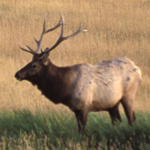|
HOME --> CLASS MAMMALIA
--> ORDER RODENTIA
--> SUBORDER SCIUROMORPHA
--> FAMILY Gliridae
--> SUBFAMILY Graphiurinae
--> GENUS Graphiurus
--> SUBGENUS Graphiurus
SPECIES Graphiurus (Graphiurus) microtis
| Author: | Noack, 1887. | | Citation: | Zool. Jahrb., 2: 248. | | Common Name: | Large Savanna African Dormouse | | Type Locality: | Dem. Rep. Congo, Marungu, Qua Mpala | | Distribution: | SubSaharan Africa excluding West Africa: Chad, Sudan (Setzer, 1956), Ethiopia (Corbet and Yalden, 1972; Yalden et al., 1996), Uganda (Delany, 1975), Rwanda (Geider and Kock, 1991; Misonne, 1965b; Monfort, 1992; Verschuren, 1987–Parc National de l’Akagera, as G. murinus), Kenya, Tanzania (Hatt, 1940b; Swynnerton and Hayman, 1951), Mozambique (Smithers and Lobão Tello, 1976), Malawi (Ansell and Dowsett, 1988 ), S Dem. Rep. Congo (Verschuren, 1987–Parc National de l’Upemba, as G. murinus), Zambia (Ansell, 1978), Botswana (Smithers, 1971), Namibia, Zimbabwe (Smithers and Wilson, 1979) and South Africa (Lynch, 1983, 1989, 1994; Rautenbach, 1982; Roberts, 1951; Taylor, 1998; Taylor et al., 1994a, as G. cf. murinus) (for Southern Africa see de Graaff, 1981; Smithers, 1983). In some of these regional works, G. microtis is included in G. murinus; thus the mapped localities and natural history data are a composite for both species. | | Status: | IUCN – Lower Risk (lc). | | Comments: | Subgenus Graphiurus. In concordance with Ansell (1989b) and Ansell and Dowsett (1988), G. microtis is recognized as a species distinct from G. murinus. Holden (1993) did not attempt to separate the synonyms associated with G. murinus and G. microtis. My improved provisional arrangement here results from further examination of specimens, data and preliminary multivariate analyses, but is no substitute for a much needed careful revision of the G. microtis and G. murinus species groups. Graphiurus microtis is a grade of savannah African dormouse; significant geographic variation exists, and it is likely that at least two species are contained within G. microtis as understood here. I examined the holotype of orobinus and concluded that it could conceivably be parvus, but most likely represents G. microtis. If so, orobinus would have priority over microtis and be the correct name for the species, but the young age and poor condition of the holotype makes positive identification difficult. Once an adequate molecular sampling of species of Graphiurus has been obtained, a sample from the holotype for molecular analyses might allow definitive allocation of orobinus. The holotype of G. microtis is lost. Dorsal, lateral and ventral views of the skull were figured in Noack (1887). Those drawings, and the dimensions given in the accompanying description, make it clear that Noack was describing a Large Savannah African Dormouse. Photograph of live animal provided in Geider and Kock (1991). Reviewed by Rossolimo et al. (2001), though some populations of G. microtis are included under their account of G. murinus, and by Holden (In Press). Late Quaternary fossils of G. microtis from C Zambia recorded by Avery (1996). Specimens reported as G. cf. murinus from Swaziland and NE South Africa by Taylor et al. (1994a) probably represent a population of G. microtis, based on their descriptions of cranial and skin characters. Graphiurus microtis is sympatric with G. kelleni over much of its range. See comments under G. angolensis regarding its relationship to G. microtis. |
|
| Offspring: | Synonyms:
albolineata (Frechkop, 1947)
butleri Dollman, 1912
etoschae (Roberts, 1938)
griselda Schwann, 1906
littoralis (Roberts, 1929)
marrensis Setzer, 1956
orobinus (Wagner, 1845)
pretoriae Roberts, 1913
schneideri (Roberts, 1938)
smithii (Thomas, 1893)
streeteri Roberts, 1913
sudanensis Setzer, 1953
tzaneenensis Roberts, 1913
vandami (Roberts, 1929)
woosnami Dollman, 1910
|
|
|



